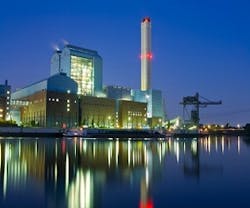EPA Advances Technologies For Clean Energy Race
The U.S. Environmental Protection Agency (EPA) is proposing a rule to advance the use of carbon capture and sequestration (CCS) technologies, while protecting Americans’ health and the environment. CCS technologies allow carbon dioxide (CO2) to be captured at stationary sources - like coal-fired power plants and large industrial operations - and injected underground for long-term storage in a process called geologic sequestration.
The proposal is consistent with recommendations made by President Obama’s interagency task force on CO2. sequestration and helps create a consistent national framework to ensure the safe and effective deployment of technologies that will help position the United States as a leader in the global clean energy race.
Today’s proposal will exclude from EPA’s hazardous waste regulations CO2 streams that are injected for geologic sequestration in wells designated for this purpose under the Safe Drinking Water Act. EPA is proposing this exclusion as part of the agency’s effort to reduce barriers to the use of CCS technologies. EPA requests that comments submitted on the rule share analytical data on the overall composition of captured CO2 streams, including physical and chemical characteristics, to help the Agency determine if additional actions are necessary to ensure the safe use of CSS technologies.
Based on review of existing regulatory programs, EPA’s proposal concludes that the management of CO2 streams under the proposed conditions does not present a substantial risk to people’s health or the environment, provides regulatory certainty to industries considering the use of CCS technologies, and encourages the deployment of CCS technologies in a safe and environmentally protective manner.
The proposed rule is complementary to previous EPA rulemakings, including final rules under the Clean Air Act that require reporting by facilities that capture or inject CO2 streams, and Safe Drinking Water Act regulations that ensure the wells used for geologic sequestration of CO2 are appropriately sited, constructed, tested, monitored, and closed. EPA will accept public comments on the proposal for 60 days following publication in the Federal Register.
EPA Backs Green Infrastructure
EPA Announces Top Contenders in Energy Star National Building…
